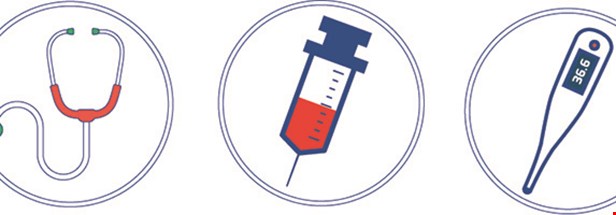Safer and More Controlled Devices: A Victory for Patient Safety
 ©EPF
©EPF
On 5 April, the Regulation on Medical Devices and the Regulation on In Vitro Diagnostic Medical Devices were adopted by the European Parliament. Both legislations pave avenues towards safer and more traceable devices, but miss an important opportunity to ensure meaningful patient involvement.
EPF welcomes the adoption of the two pieces of legislation, as they lay down stricter rules ensuring that medical devices are traceable and comply with patient safety standards. The two Regulations strengthen the post-market surveillance and make sure that more and higher quality information is available for patients and healthcare practitioners.
Some other novelties include:
- Compulsory “CE mark” following a conformity assessment procedure;
- Clear and easily understandable instructions;
- Inspections on the producers’ facilities;
- Extra safety-checks for high risk medical devices through an expert committee;
- The requirement of an identification system for all devices.
Another new element is the fact that an EU Member State can ask a website which sells in-vitro diagnostic medical devices (such as blood testing devices) to cease its activities, for reasons of protection of public health.
At the time of the negotiations rounds, EPF provided recommendations for amendments and changes that would benefit patients. We are happy to see that our key concerns were highlighted during the debates and that many of our recommendations were adopted by the Parliament.
An Improved, but not Flawless Framework
However, two important caveats remain in our perspective. For the In-Vitro Diagnostic Medical Devices Regulation, the final agreement fails to integrate a proposal from the European Parliament to involve patients and healthcare professionals in the review of instruction for use for in vitro diagnostic devices as advocated by EPF to ensure information is tailored to the needs of users.
Another concern from EPF’s perspective is that many measures on reporting and surveillance are required only for serious incidents. In our view, it is important to collect and monitor information about all incidents in order to prevent them and ensure patient safety.
Patients Have a Role in Monitoring the Implementation
The European Patients’ Forum remains committed to ensure that patients have access to quality information on medical devices that corresponds to their needs. EPF will continue to provide input for the implementation of important measures such as the medical devices database, and will monitor implementation once the legislation enters into application.
“Seeing the patient safety being in the centre of two major European pieces of legislation is a great achievement for us at EPF. We call for Member States to involve patients and their organisations in an even more meaningful way at national level” commented Secretary General Nicola Bedlington.
To read more on this topic, EPF has published briefings on both the Medical Devices Regulation and the In Vitro Diagnostic Medical Devices Regulation.
An overview of how Patient Safety is addressed by the Regulations has also been produced, together with a factsheet on medical devices that can be found here.
The Regulations are available in all EU languages here and here.
